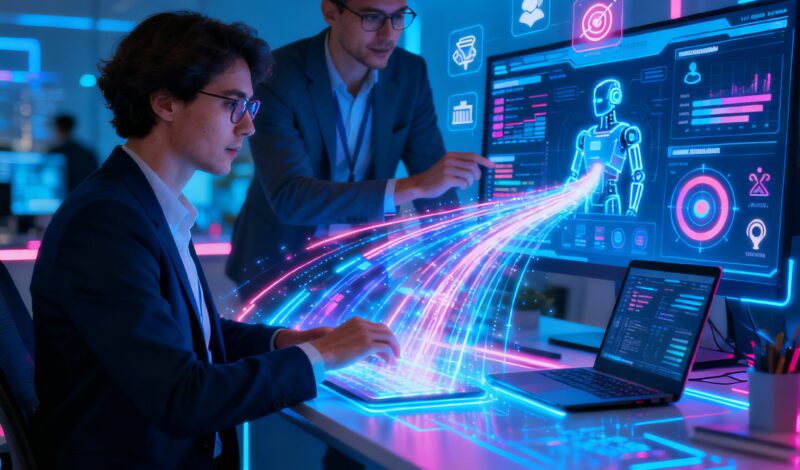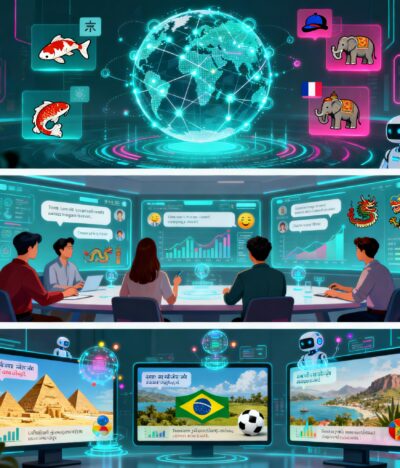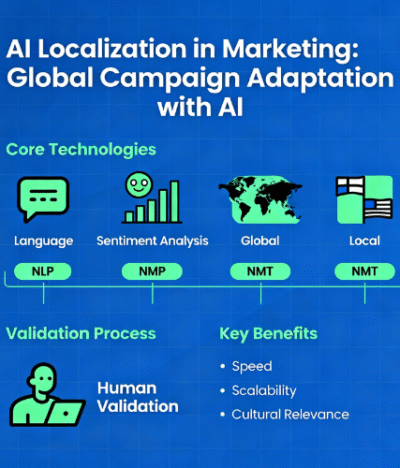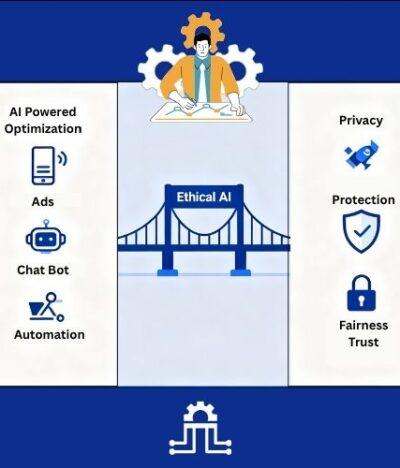Exploring the Future of AI-Driven Marketing
In the modern marketing landscape, the AI-powered campaign has become the new creative frontier. Beyond that, these campaigns use artificial intelligence to enhance decision-making, personalize outreach, and optimize results. However, many marketers still wonder what exactly goes on behind the scenes.
To answer that, this blog takes you inside an AI-powered campaign, exploring its structure, impact, and a step-by-step case study framework that any brand or agency can adapt to elevate their marketing performance.
The Rise of AI-Powered Campaigns
Marketing is no longer about intuition alone — it’s about intelligent insights. As a result, AI allows marketers to move beyond surface-level analytics and understand audiences at a granular level.
An AI-powered campaign integrates data-driven predictions with human creativity to deliver precisely what consumers need, when they need it. Moreover, from audience segmentation to ad optimization, AI acts as the invisible strategist, continuously learning from real-time data to improve outcomes.
Why AI Campaigns Outperform Traditional Strategies
-
Precision Targeting: AI models analyze vast datasets to identify micro-segments within your audience.
-
Dynamic Personalization: Content and offers adjust automatically based on individual user behavior.
-
Smarter Spend Allocation: Machine learning optimizes ad spend, ensuring maximum ROI.
-
Faster Insights: Real-time feedback loops help marketers pivot instantly.
Consequently, these elements transform campaigns from static sequences into adaptive ecosystems that grow smarter with every interaction.
Building an AI-Powered Campaign: A Step-by-Step Framework
While every campaign is unique, successful AI-powered campaigns follow a structured process. Therefore, the framework below helps you design, execute, and evaluate one effectively.
Define Objectives and Data Inputs
Before deploying AI, clarity is key. Identify the campaign’s purpose — is it to increase brand awareness, drive conversions, or reduce churn? Ultimately, each goal determines which AI models and data points will be most useful.
Collect the Right Data
Use first-party data, social insights, and CRM information to train your AI systems. In addition, the more accurate and diverse the dataset, the more intelligent your predictions will be.
Focus on:
-
Behavioral data (clicks, time on site, cart history)
-
Demographic data (age, location, interests)
-
Psychographic data (values, lifestyle, buying intent)
Choose the Right AI Tools
The heart of an AI-powered campaign lies in its tech stack. Depending on your goals, you may integrate:
-
Predictive analytics tools
-
Natural language processing (NLP)
-
Computer vision
-
Automation platforms
Additionally, choose tools that align with your budget and integrate seamlessly with your existing systems.
Craft the Creative Layer
AI can analyze data, but storytelling remains human. Therefore, combining machine insights with emotional intelligence helps build campaigns that connect.
For example, an AI engine might detect that your audience engages most with short-form video content in the evenings. Meanwhile, your creative team crafts the story that resonates — humor, empathy, or inspiration.
As a result, an AI-powered campaign thrives when human emotion and machine logic coexist harmoniously.
Activate and Monitor in Real Time
Once the campaign launches, AI begins optimizing automatically. Algorithms test variations, measure engagement, and reallocate spend — ensuring resources flow toward what works best.
If needed, AI instantly rebalances strategy across channels. Consequently, this constant evolution eliminates lag and allows campaigns to adapt dynamically.
Evaluate and Learn
The post-campaign phase is where the true value of AI emerges. During this stage, performance metrics and audience reactions are analyzed to improve future strategies.
Furthermore, feeding campaign data back into your models creates a continuous learning loop. As a result, predictions become stronger over time.
Mini Case Study: A Realistic Example
Let’s imagine a mid-sized fashion brand launching a new sustainable collection.
-
Objective: Increase conversions for eco-friendly apparel.
-
Data Inputs: Purchase history, user browsing behavior, social listening insights.
-
AI Tools: Predictive analytics, sentiment analysis, dynamic pricing algorithms.
-
Execution: AI segments the audience and tests creatives.
-
Results: Engagement rose 34%, costs dropped 18%, repeat purchases increased 22%.
Overall, this shows how even small brands can achieve outsized impact through an AI-powered campaign.
The Human Touch in AI Campaigns
Despite the automation, humans remain central to AI’s success. Data can predict patterns, but ultimately, empathy creates loyalty. Therefore, the brands that win are those that use AI to amplify human creativity — not replace it.
When marketers combine analytical power with authentic storytelling, campaigns don’t just perform better — they feel better to consumers.
Redefining Campaign Strategy with AI
An AI-powered campaign isn’t just about smarter machines — it’s about smarter marketers. In conclusion, combining technology, creativity, and ethics sets a new benchmark for modern marketing.
AI provides precision; humans provide perspective. Together, they create campaigns that adapt, engage, and inspire.




